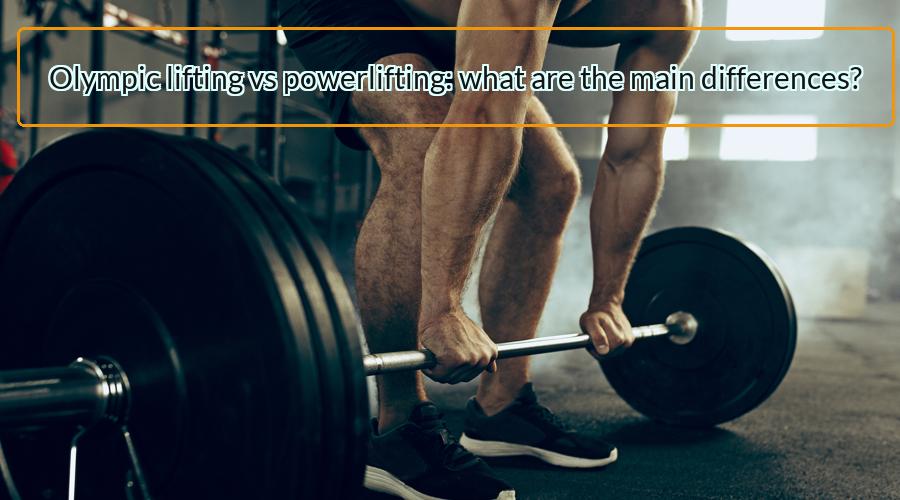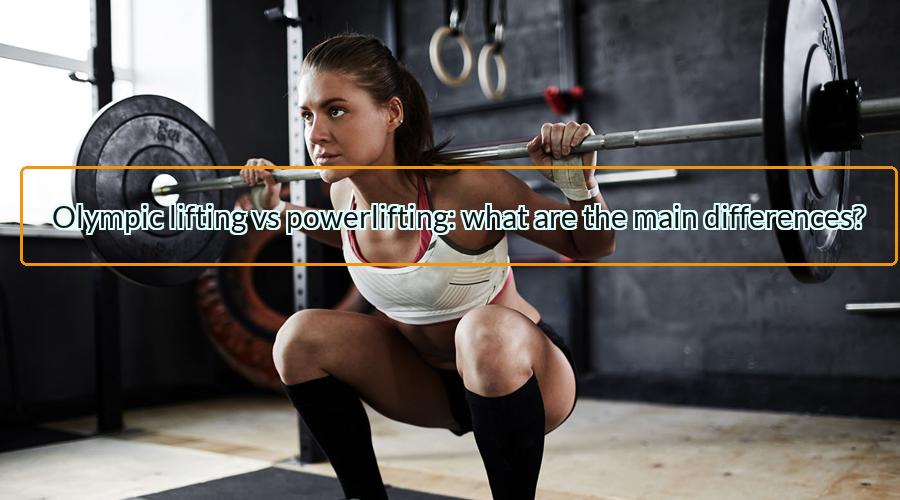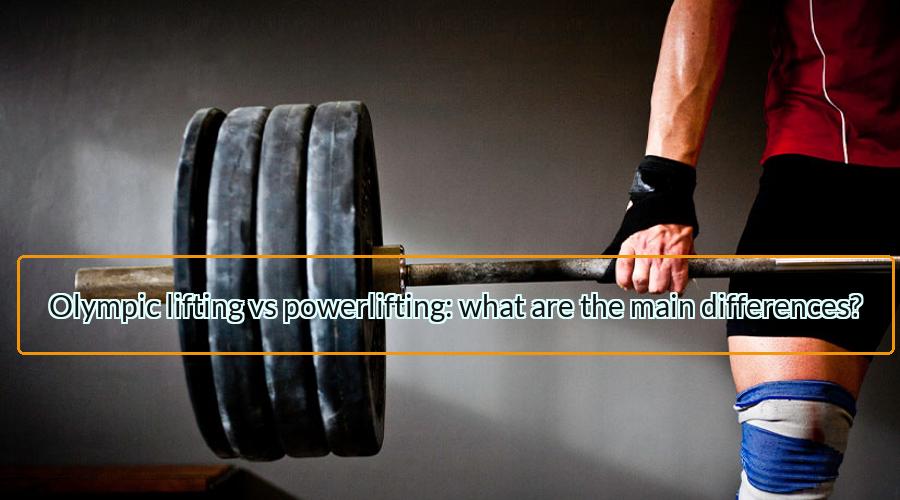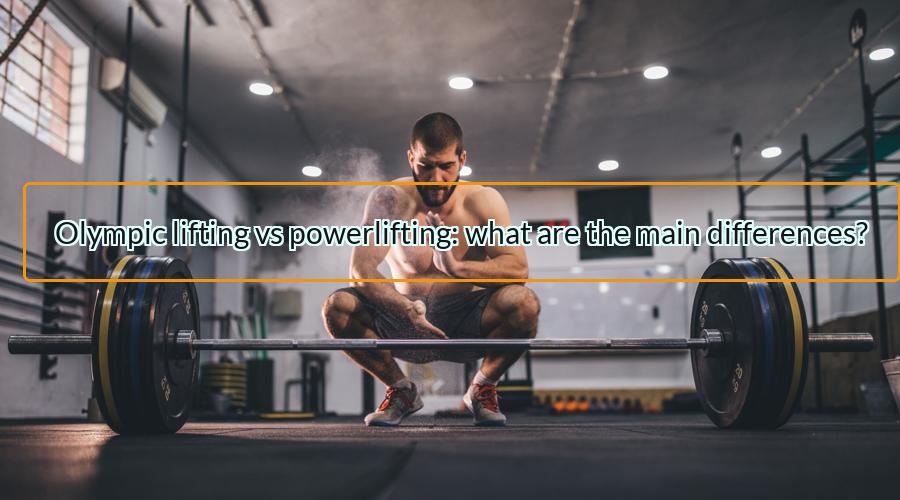
The Olympic lifts and powerlifts are two of the most popular strength training techniques used by athletes in a wide variety of sports. Both are designed to increase an athlete’s power and explosiveness, but there are some key differences between the two that set them apart. In this article, we will explore the main differences between Olympic lifting and powerlifting to help you decide which type of training is best suited for your athletic goals.
What is Olympic lifting?
Olympic lifting is a form of weightlifting that is popular among athletes and fitness enthusiasts. It encompasses a wide range of lifts, including the snatch, clean and jerk, and the clean and press. Olympic lifting originated in ancient Greece, where it was used as part of the training for soldiers preparing for battle. Over time, it has evolved into an international competitive sport with its own set of rules and regulations.
The primary focus of Olympic lifting is on improving strength, power, speed and agility through specific exercises designed to target each area. In order to become proficient at Olympic lifting, one must have good technique in order to maximize their performance when attempting heavy weights. This can be achieved by focusing on proper form during practice sessions as well as gradually building up strength over time.
What is powerlifting?
Powerlifting is a type of strength sport that consists of three main lifts: the squat, bench press, and deadlift. It has become an increasingly popular form of physical activity among athletes and fitness enthusiasts alike.
Powerlifting can help people to develop strength, endurance, power and coordination quickly. It provides a great way to challenge oneself physically while helping to increase muscle mass and improve overall health. Additionally, powerlifting can be tailored to each individual’s body type and goals, making it suitable for everyone from professional athletes to those just starting out in the gym.
The primary benefits of powerlifting are improved strength and muscle gains as well as increased flexibility in the joints due to higher muscle mass surrounding them. With regular practice and correct technique you can expect improvements in core stability, balance and posture as well as enhanced mental focus during workouts.
Read more about body beast shoulder workout

Differences between Olympic lifting and powerlifting
Olympic lifting and powerlifting may look similar, but they are two very different activities. The biggest difference between the two is the types of lifts that define each sport. Olympic lifting consists of two main lifts — the snatch and clean & jerk — while powerlifting contains three: the squat, bench press, and deadlift.
In Olympic weightlifting, an athlete has one attempt to lift a certain weight in each lift. In contrast, powerlifters often have multiple attempts in order to achieve a new personal record or “PR” for each lift. Additionally, Olympic lifts involve speed and explosive movements which involve more muscles than powerlifting does. This requires athletes to be more well-rounded with their physical conditioning as opposed to focusing on max strength like in powerlifting competitions.
Similarities between powerlifting and Olympic lifting
The world of weightlifting is full of differing techniques, exercises and goals. One of the main topics discussed when studying lifting techniques is the difference between Olympic-style lifting and powerlifting. While these two disciplines have some major distinctions, there are also some similarities that should not be overlooked.
At their core, both powerlifting and Olympic-style lifting involve pushing weights from point A to point B. Powerlifters focus on maximal strength and use three primary lifts—the squat, bench press, and deadlift—to work towards this goal. The Olympic lifts are used in competition by athletes looking to increase power output; they include the snatch and clean & jerk. Although each discipline has its own unique set of rules and regulations, both types of lifting require intense concentration, proper form and technique mastery to be successful.

Olympic lifting vs powerlifting: how to choose the best for you?
Olympic lifting vs powerlifting: how to choose the best for you? The world of strength training is filled with many different types of exercise, from bodybuilding to powerlifting and Olympic lifting. But how do you decide which one is right for you?
The two most popular styles of strength training are Olympic lifting and powerlifting, both of which offer a great way to build muscle, increase strength and improve overall fitness. While they have similarities in form, there are some key differences between them that should be taken into consideration when deciding which one is best for your individual needs.
Olympic lifting places more emphasis on explosive movements using weights lifted over the head, as well as technical exercises such as snatches and clean & jerks.
Pros of Olympic lifting and powerlifting
Olympic lifting and powerlifting are two of the most popular forms of weight training today. Both provide gym goers with a variety of benefits, including increased strength, improved coordination, and better overall health. Deciding which one to focus on is largely a matter of personal preference; however, there are some distinct pros to each that can help inform your decision.
For Olympic lifting in particular, the primary benefit is its use as an effective tool for developing explosive power. This type of training focuses on quickly generating force from the ground up with compound movements like the snatch and clean & jerk. The fast-paced nature of these lifts also makes them great for burning calories and increasing cardiovascular endurance. Finally, Olympic lifts can help you improve body awareness by teaching proper form in order to maximize efficiency and safety while executing complex moves.
Read more about Braun Strowman workout

Cons of Olympic lifting and powerlifting
Olympic lifting and powerlifting are two distinct forms of weight training that have seen a surge in popularity over the past few years. While both offer great benefits for physical fitness and strength, there can also be some potential negatives associated with each. Here we’ll take a look at some of the cons of Olympic lifting and powerlifting.
First, both Olympic Lifting and Powerlifting require an intense amount of dedication to your training regimen. Competitive lifters often spend hours every day perfecting their technique while also building strength, which requires a lot of time and hard work. If you’re not willing to put in the effort necessary to become proficient in these disciplines, you may struggle to make progress.

Second is the risk for injury when performing heavy lifts with improper form or technique.
What are the benefits of Olympic lifting?
Olympic lifting can help improve overall strength, power, coordination, balance, and flexibility. It also helps to build muscle mass and burn calories. Additionally, Olympic lifting can help athletes develop better explosiveness and speed which can be beneficial for a variety of sports. Finally, it is an effective way to increase core stability and body awareness.
What are the benefits of powerlifting?
Powerlifting offers many benefits. It can help build strength, increase muscle mass, improve bone density, and reduce stress levels. Additionally, powerlifting can help improve posture and balance while also increasing confidence. Lastly, it can be an excellent way to stay in shape and reach fitness goals.
What is the difference between Olympic lifting and powerlifting?
Olympic lifting and powerlifting are two different types of weightlifting. Olympic lifting involves the use of two lifts, the snatch and the clean and jerk, while powerlifting focuses on three lifts: the squat, deadlift, and bench press. Olympic lifting requires more technical skill and explosive power, while powerlifting is focused on maximal strength. Both require proper form and technique to be successful.